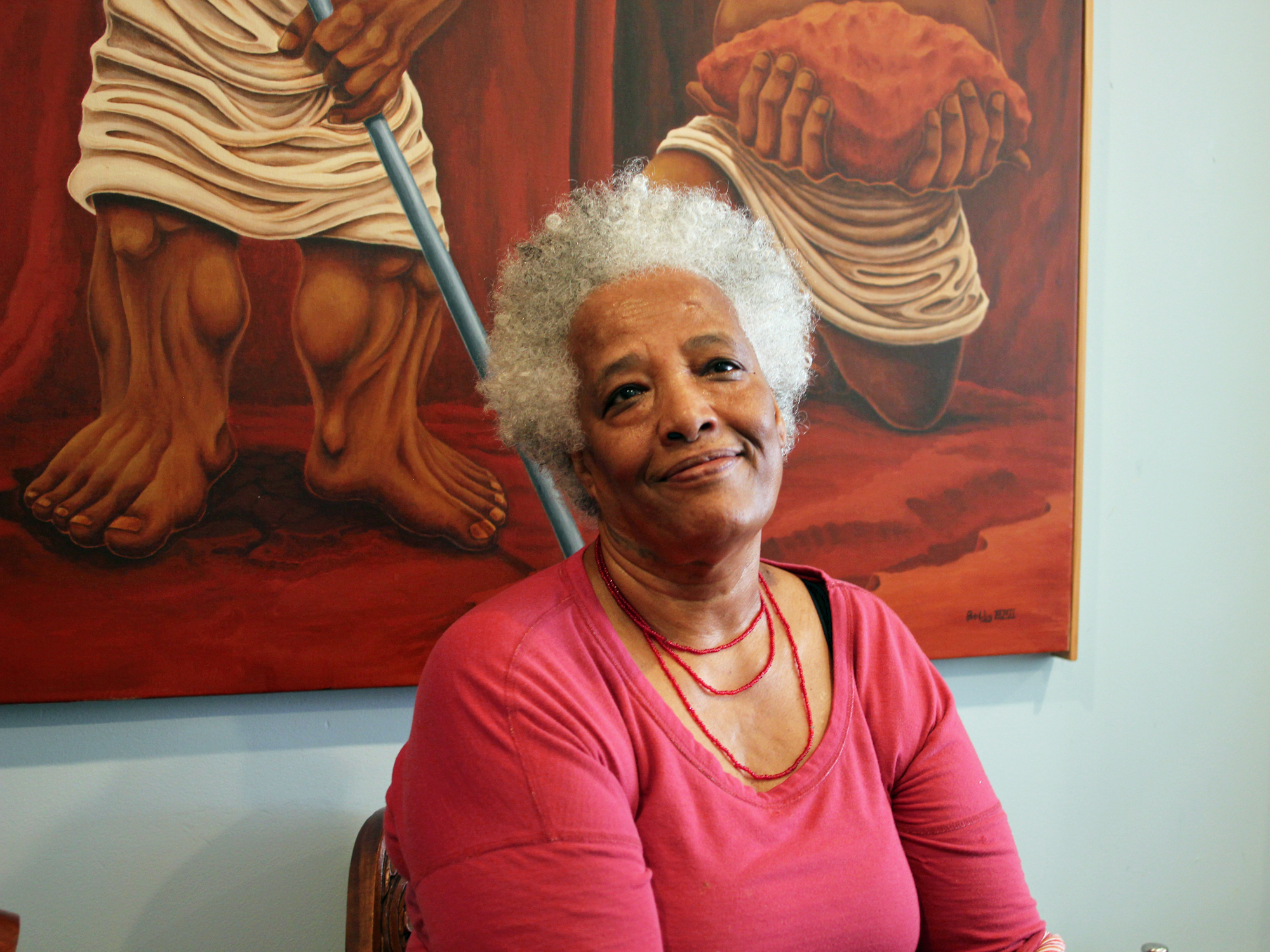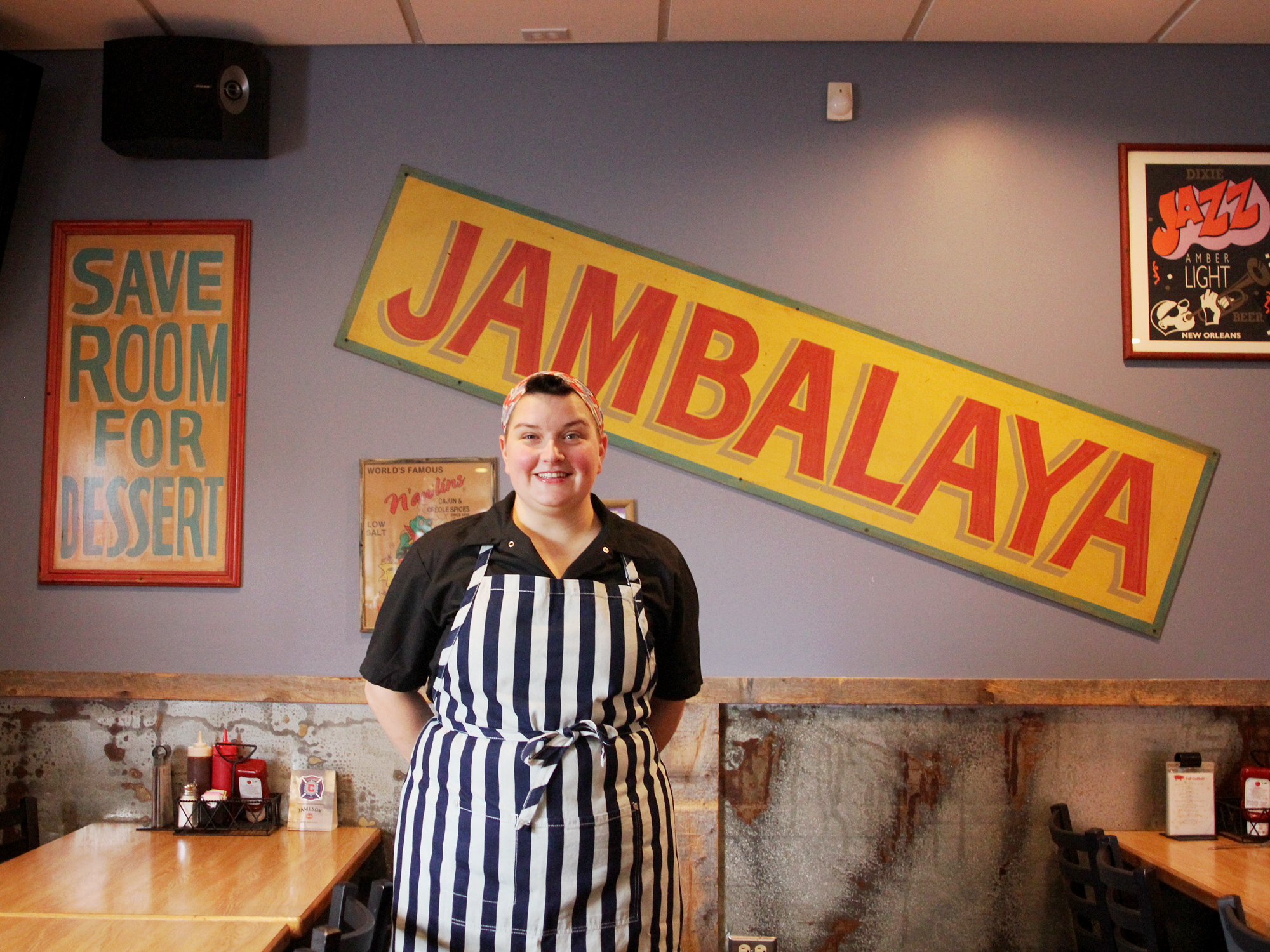ONCE HE OWNED A DESTINATION CHICAGO restaurant, Printer’s Row. He was a pioneer in the rundown South Loop, a founding chef behind what was then called “new American cuisine,” prepared with local Midwestern ingredients, years before the term “farm-to-table” cooking was even coined. He was named to what’s now the James Beard Awards’ Who’s Who of Food & Beverage in America in its inaugural year, alongside the likes of Julia Child, Craig Claiborne, Alice Waters and Robert Mondavi.
But Michael Foley closed Printer’s Row in 2004, eons ago in restaurant years. And what does a star chef do when his famous restaurant is no more?
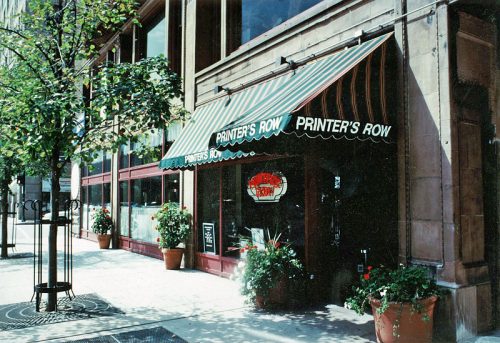
Printer’s Row, 2001
Like many before him, Foley, who’d also owned First Street, Foley’s Grand Ohio and Le Perroquet at various times, turned to consulting. He focused on everything from product awareness to web services, helping some thirty companies develop or turn around, among them Cosi, Tim Horton USA, Mrs. Dash and Starbucks.
But the pace was very stressful and he says that by late 2016 he was exhausted and didn’t want to work for large-scale businesses anymore. “I really wanted to grow something,” he says. “I just didn’t realize that it would be, literally, crops.”
Then one day Foley, who has loved the outdoors since he was young and once wanted to be a professional golfer, was looking for ideas on a job site, and saw an ad for a farm gardener to assist with two small plots owned by a chef/restaurateur outside of Chicago. It had been placed by Chuck Pine of Chuck’s Southern Comforts Cafe in Darien and Burbank, who kept vegetable gardens behind his Darien restaurant and on property he owns in Hickory Hills.
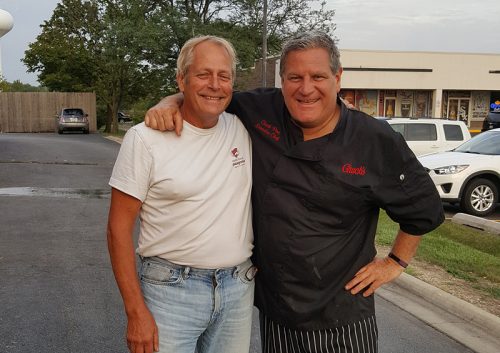
Michael Foley with Chuck Pine of Chuck’s Southern Comforts Cafe
On impulse, Foley emailed that he’d had an organic farm at one time (in Michigan; he sold it in 2005) and would love the chance to produce ingredients for a restaurant. Chuck’s had gotten numerous responses to the ad, but invited Foley in to talk to the team. Foley recalls that in the interview, Pine—who had been at Frontera working for Rick Bayless in Foley’s heyday—said to him, “I know who you are. Is this really what you want to do? You have to get dirty, lift things, weed. It’s day-to-day hard work.”
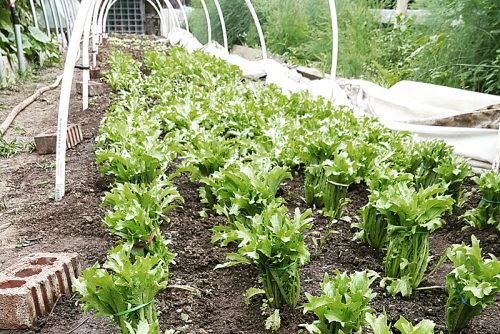
FOLEY GREW UP VISITING HIS PATERNAL GRANDPARENTS’ 350-acre diversified farm in Bloomingdale, as a young man looking at ways to grow things organically and biodynamically. He had also been involved in a winery and brewery over the years, so he assured Pine he could handle the job—and got it. Now, at age 66, he spends an average of 50-60 hours a week, depending on the season, tending the acre under cultivation, aided only by one part-timer and Pine.
A third of that acre is part of the grassy plot behind the parking lot at the Darien restaurant. Pine, who started growing things 15 years ago when he couldn’t find the Mexican herb Hoja Santa, had built an unheated 12-foot wide by 75-foot long greenhouse on the property, and this past fall, he and Foley hand-built five 4-foot-wide hoop houses to try to overwinter hearty crops like collards, chard, and kale. They also planted 14 fruit trees outside last summer, but these are still tiny.
“Growing is not for the faint of heart,” Foley says, “but neither was cooking in a restaurant.”
The other two-thirds of an acre under cultivation is in Hickory Hills, where Pine also has a small greenhouse for seed germination. He buys most of his seeds from Johnny’s Selected Seeds, though he also saves his own and estimates that this year all his pepper plants will be grown from seeds he took from grocery store peppers. In addition, 1500 plants in his basement are being transferred outside this spring.
Foley says that part of his job has been helping Pine do things he wanted to do better but didn’t have time. Besides constructing the hoop houses, they include sharpening the planting schedule and changing some of the crops to accommodate the new menu, for instance by adding lots of different lettuces for a salad blend. One innovation this year is the introduction of succession planting. “This means staggering the planting and harvesting of crops to extend the season,” he explains, “and also planning the crop rotation to maximize efficiency and the replenishment of the soil with nutrients.” He’s planting three or four crops of cucumbers this summer, for example, and when each one comes out, something else will go in for balance—in all, over thirty different crops.

Pine figures his restaurants won’t have to buy any tomatoes (he has 800 plants of many varieties) or cucumbers this summer, or any green peppers for four months. This year they’re growing more varieties of peppers for eating fresh, and fewer for drying and smoking. He also has more beets and squashes than he can use and sometimes sells the excess. “Almost every herb” is or will be planted, Pine says, along with garlic and shallots (but no onions or potatoes).
Each season presents its challenges, however. Pine admits the overwintering project was “a bit of a bust” because of the extreme cold, and they weren’t “eating lettuce all winter” like Johnny’s Selected Seeds promised. Foley adds that two of the hoop houses flipped in the wind—and flipped him over, too. “Figuring out how to get a hundred feet of plastic back on the hoops and secure again was a bitch,” he recalls. “Not for the faint of heart, but neither was cooking in a restaurant.”
While the hoop houses have thermal blankets, both they and the Darien greenhouse depend on solar light and heat, and since the water is turned off in winter, Foley needed a way to water the spinach, chard, mustard greens, mache, kale, cress and radishes he did have. He settled on melted snow.
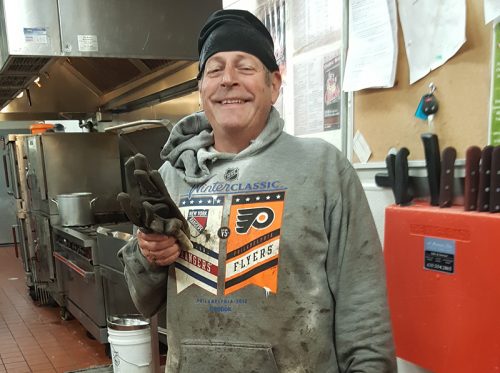
Farmer Foley
SPRING BROUGHT THE PROPAGATION problem. “You have to calculate the last frost to decide on the optimum planting time,” Foley says. “If you start the seeds too early and the ground isn’t ready, the plants will become too big and spindly. If you start them too late, they’ll be too small to transplant.”
Naturally, the bulk of the work is in the growing season. Foley prepares the soil, turning over the compost, which is made from both kitchen scraps and humus from large bins of leaves, supplemented with horse manure he brings back from doing dressage in Oswego. He cleans the equipment, provides crop supports like netting and trellises and works out the crop rotation. “We also experiment with things like crop orientation,” he says, “We have both east-west and north-south and have learned a lot about what grows best where and how much we really need.”
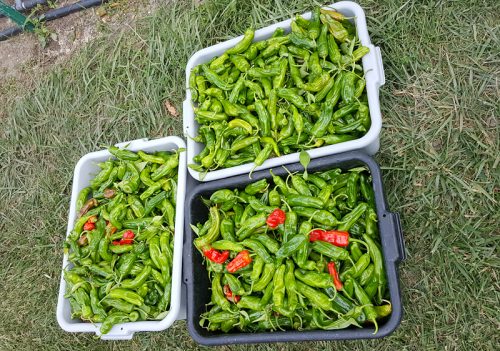
Shishito peppers
Foley points out that you never stop learning about something like this, but you have to know what to do with the knowledge. Right now he’s grappling with issues like regulating solar input, understanding root structures, whether or not to hill up around crops, organizing a weeding program, managing unwelcome surprises and planning for fall based on what happens this spring and summer. He confesses, however, that what keeps him in the garden is the correlation he draws between plants and the human body. “I call it ‘cell cuisine,’” he says. “I want to find out how to grow more nutritious plants, because when the plants are healthier, the people who eat them are, too.”
For his part, Pine says he is “super happy with what Foley brings to the table. He’s a workaholic, and he’s killing it,” he says. “He also helps with concepts, recipes and good ways to use things. Last year, we were getting used to each other, but this year I think we’ll really take it to a new level of serious production.”
A chef at the forefront of farm-to-table has come full circle.
Anne Spiselman is a freelance writer who has covered food, wine, and culture for decades. She’s a frequent contributor to Crain’s Chicago Business and Edible Chicago and has written for most local publications and some national ones.
Latest
Join the Discussion
After you comment, click Post. If you're not already logged in you will be asked to log in or register with Disqus.






